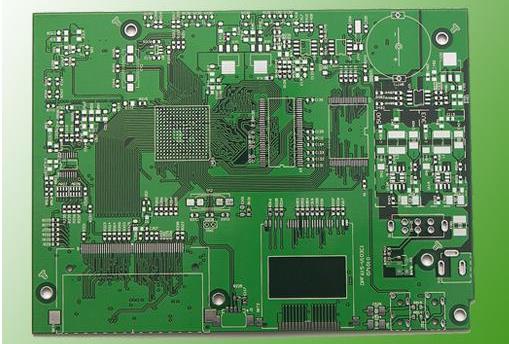The legendary life of Paul Eisler, the father of PCB
PCB (PrintedCircuitBoard), the Chinese name is printed circuit board, also known as printed circuit board. It is an important electronic component, a support for electronic components, and a carrier for electrical connection of electronic components. Its inventor was Paul Eisler, an Austrian, who used a printed circuit board in a radio device in 1936. In 1943, the Americans used this technology extensively in military radios. In 1948, the United States officially recognized this invention for commercial use. On June 21, 1950, Paul Eisler obtained the patent for PCB invention, which has been exactly 60 years since then.
This person, who is known as the "father of PCB", has a wealth of life experience, but he is rarely known by the printed circuit board industry.
In fact, Eisler’s life story is described in his autobiography "My Life and Printed Circuits", like a mysterious novel, full of persecuted themes.
Eisler was born in Austria in 1907 and graduated from the University of Vienna in 1930 with a bachelor's degree in engineering. He had already shown his talent as an inventor at that time. However, his primary goal was to find a job in a non-Nazi land. But the special environment he was in at the time made the Jewish engineer escape from Austria in the 1930s. Therefore, in 1934, he found a job designing an electronic system for trains in Belgrade, Serbia, which enabled passengers to record personal records through headphones., Like an iPod. However, at the end of the work, the customer provided food instead of payment currency. Therefore, he had to return to his native Austria.

Back in Austria, Eisler contributed articles to newspapers, founded a radio magazine, and began to learn printing technology. Printing was a very powerful technology in the 1930s. He began to imagine how to apply printing technology to circuits on insulating substrates and put it into mass production.
In 1936, he decided to leave Austria. He was invited to work in the UK based on two patents he had already filed: one is a graphic impression recording, and the other is a stereo television with a vertical resolution line.
His TV patent sold for 250 francs, which is enough to live in Hampstead for a period of time, which is a good thing because he cannot find a job in London. One telephone company really liked his idea of a printed circuit board-it could eliminate the bundles of wires used in the telephone system.
Due to the outbreak of World War II, Eisler began to figure out a way to get his family to leave Austria. When the war began, his sister committed suicide, and he was detained in Britain as an illegal immigrant. Even after being locked up, Eisler was still thinking about how to help the war.
After was released, Eisler worked for Henderson & Spalding, a music printing company. Initially, his goal was to perfect the company's graphic music typewriter, not in a laboratory, but in a bombed building. Company owner H.V. Strong forced Eisler to sign all patents that appeared in the research. This is not the first time, nor the last time Eisler has been used.
One of the troubles with military work is his identity: he has just been released. But he still went to the military contractor to discuss how his printed circuit could be used in the war.
Through his work at Henderson & Spalding, Eisler developed the concept of using etching foil to record traces on the substrate. His first circuit board looked more like a plate of spaghetti. He applied for a patent in 1943.
At first, no one really paid attention to this invention until it was used to fuse the cannonball to shoot down the V-1buzz bomb. After that, Eisler had a job and gained a little fame. After the war, this technology was spread. The United States stipulated in 1948 that all airborne instruments must be printed.
Eisler's 1943 patent was finally divided into three independent patents: 639111 (three-dimensional printed circuit board), 639178 (foil technology for printed circuits), and 639179 (powder printing). These three patents were published on June 21, 1950, but only a few companies obtained patent authorization.
In the 1950s, Eisler was used again, this time while working at the British National Research and Development Corporation. The organization basically leaked Eisler's US patent. But he continued to experiment and invent. He came up with ideas for battery foil, heating wallpaper, pizza oven, concrete molds, defrosting rear windows, etc. He achieved success in the medical field, died in 1992, and has dozens of patents throughout his life. He just won the Nuffield Silver Medal from the Institute of Electrical Engineers.
iPCB is a high-tech manufacturing enterprise focusing on the development and production of high-precision PCBs. iPCB is happy to be your business partner. Our business goal is to become the most professional prototyping PCB manufacturer in the world. Mainly focus on microwave high frequency PCB, high frequency mixed pressure, ultra-high multi-layer IC testing, from 1+ to 6+ HDI, Anylayer HDI, IC Substrate, IC test board, rigid flexible PCB, ordinary multi-layer FR4 PCB, etc. Products are widely used in industry 4.0, communications, industrial control, digital, power, computers, automobiles, medical, aerospace, instrumentation, Internet of Things and other fields.